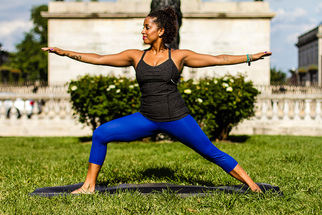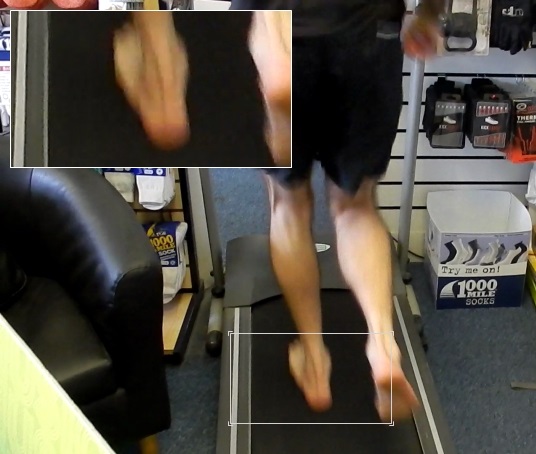 Q: How frequently do runners get injuries? A: The statistics tell us that 65% of runners will get an injury at some point during a calendar year. However sometimes statistics can be scary. A lot of these injuries can be simple and straightforward so don’t be put off. Q: What are the most common injuries that runners experience? A: The most common injuries that you hear about tend to be commonly known as Runners knee, shin splints or Achilles tendonitis. What I would say to people is, please don’t try to self-diagnose yourself from google. If you have an injury, seek professional help. It will help you get over the injury quicker and get you back on your feet before you know it. Q: What can we do to try to prevent these injuries? A: Wearing correct footwear is always a good place to start. Doing an effective warm up and warm down is essential, and strengthening work can be simple to do and hugely effective. Q: What should a warm up and cool down involve? A: The warm up should do exactly that, warm you up. Therefor it is essential that your body is moving. That could start with a walk, gentle jog, skipping or anything similar. You can also throw in some mobility exercises such as high knees, side stepping and running backwards. Any of these things will increase the heart rate, get some blood flowing and prepare your muscles for exercise. They are also specific for the activity ahead which is running. The cool down can also involve some walking and also some stretching routines. Gentle stretches will return the muscles to their normal length and hopefully prevent you from feeling all tight the next day. Q: What about strength training? A: Anyone can do some simple body weight exercises at home such as squats, lunges and press ups. Calf raises and heel drops are great to preventing Achilles problems. A stronger body is harder to break down. Once or twice per week is plenty. If you have access to a gym them even better! There are hundreds of exercises you can be doing! Q: I have heard people saying that Yoga and Pilates are good for injury prevention in runners? A: YES! They are excellent. This is a bit like taking what we have just spoken about to the next level. Yoga is a great way to stretch muscles and relax the body. Pilates is great for strength and in particular core strength. Core strength basically means strength through the centre of your body which is very important. Q: What if I get home after a run and I feel a little bit of a niggle pain say for instance in my ankle? A: Remember when you did some basic first aid at school? RICE? Rest, Ice, Compress, Elevate? Just follow this and hopefully the pain won’t come to anything. If however, the pain gets worse, seek some professional help. Q: So when you feel an injury such as pain in the knees, should you stop exercising and rest it completely? A: In short No. There is always an alternative type of exercise that you can do. We call this cross training. So for instance if you can’t run, you can go out on your bike for a cycle. A cross training machine provides a low impact form of exercise which is similar to running. Best of all, the swimming pool can sometimes be a savior to injured runners. You can run up and down the swimming pool with very little impact on your body. It is always better to do something rather than nothing. This rule especially applies for those who may be carrying too much weight. Being overweight puts extra strain on the joints so weight loss is great for injury prevention. Q: Can massage help? A: Yes. Massage is a great way to relax any tense muscles and get fresh blood flowing, therefor great for injury prevention. Massage therapists tend to charge around £25-£40 for an hour. You can also self massage. It’s pretty easy to do with either your hands, a tennis ball or a foam roller. Q: Is there anything people should avoid doing? A: Good question. Yes. Don’t do too much too soon. So if you want to run more, don’t increase by any more than 10% per week in terms of distance. If you increase your distance one week, keep the speed the same. Increasing both distance and speed could be a recipe for disaster. I also sometimes see people doing crazy things like lots of hill reps. Yes you can do some hill reps, once a week, but if your body is not strong enough and not ready for it then it will just break down. They are very strenuous on the joints and working muscles. It’s the same with Plyometric exercises. Put simply, plyometric exercises involve jumping. They can be great for improving power and speed but they are very harsh on the body and can be a big injury risk. You have to know when to include them in your training but more importantly know when to stop. Q: What advice would you give for somebody who seems to be regularly on the injury table? A: If running is causing you lots of injuries, there is clearly something wrong with what you are doing or the way that you run ie your biomechanics. After all, if you put square wheels on your car it isn’t going to go very far. You could have a professional person do a biomechanics assessment on you and recommend drills and exercises to iron out any problem areas. This should make you more efficient runner and more resistant to injuries. Q: So all in all what are your top three tips for injury prevention? A: Proper fitting running shoes, a good warm up and cool down, and lastly don’t do too much too soon. Following these simple rules and you should be in the 35% of runners who don’t experience an injury. Colin Thomas.
Colin is a freelance Physiologist, writer and speaker who helps runners, beginners to elite, all over the world to reach their running goals. He has spent time in Kenya with some of the world’s best coaches and athletes. A runner himself with a current marathon pb of 2.33. www.performancerunningspecialist.com [email protected]
1 Comment
|
